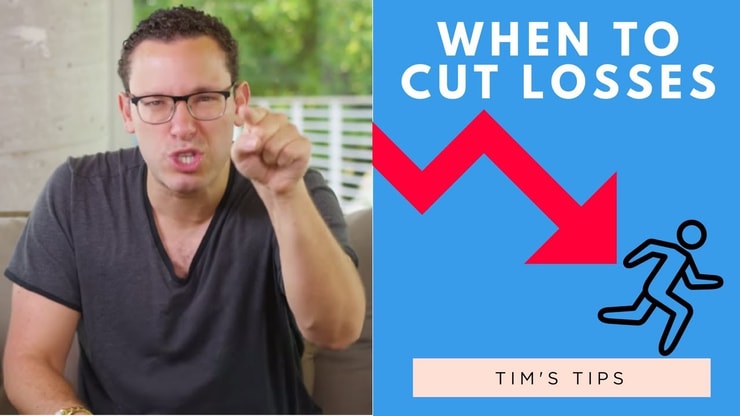With so many trading strategies available, how can you find the right one for you and your account size?
This is why I think it’s critical to build your knowledge account before you start trading. You need to know what’s out there.
My strategy is to day trade penny stocks. I’ve been doing this for over 20 years and teaching trading for 12. And I want more people to find success in the markets. To me, that means they become self-sufficient traders who can think for themselves.
I have several millionaire and six-figure students. They all come from my Trading Challenge. They didn’t get there overnight, and they all worked to find their strategies based on the rules I teach.*
And some of my top students now trade completely differently from me. So it’s key to learn how you can approach the market and the trading style that works for you. Let’s get into it!
Table of Contents
- 1 What Are Trading Strategies?
- 2 Types of Trading Strategies for Beginners
- 3 What Type of Trading Strategy Is Most Profitable?
- 4 Stock Market Strategies: What You Need to Analyze
- 5 6 Key Tips on Trading Strategies for Beginners
- 6 What Are the Top Trading Strategies for Penny Stocks?
- 7 The Bottom Line on Trading Strategies for Beginners
What Are Trading Strategies?

2025 Millionaire Media, LLCTrading strategies are your own personal rules you follow in the stock market. They dictate what kinds of stocks you trade and how.
You must have a solid trading strategy, otherwise, you’re just gambling.
One of my day trading strategies is to cut losses as quickly as possible. It’s actually my #1 rule. If a stock turns against me, I exit immediately to stop the hemorrhaging. Some hold and hope the stock will rally…
Sometimes it does. I’m not willing to bet my money on it, though. I’d rather move on to the next play.
Trading strategies can also be based on chart patterns. For instance, if I’ve seen a stock go supernova after a specific catalyst, I’ll watch for the same catalyst to occur again. When it does, I’m prepared for another spike.
There are also specific trading strategies that describe your trading style. I know lots of traders, for instance, who never hold a position overnight. Others refuse to buy into a position premarket or after-hours.
This doesn’t mean those trading strategies are right. They’re just right for the individual trader.
Types of Trading Strategies for Beginners
I primarily trade penny stocks. My goal is to take profits fast on volatile, fast-moving stocks.* That’s how a lot of my top students trade, too.
When I teach or mentor new traders, though, I want them to know all the possibilities. A self-sufficient trader is a smart trader.
Let’s look at some of the most common trading strategies and how they work.
1. Day Trading
Day trading is just what it sounds like: trading stocks between the market open and close. Day traders don’t hold positions overnight — at least, not often. They close out their positions before the market closes.
I’m a day trader. It can be a fast-paced way to take advantage of quick price action. I also teach my students how to read stock charts, recognize patterns, learn from catalysts, and think for themselves in the market.
Day trading can work around almost any schedule. I might hold a position for just a few minutes or hours. After I exit, I can either look for new plays or find another way to spend my time.
Day trading strategies can also help mitigate risk. If I pay close attention to every play, I can exit quickly if the price action moves against me.
2. Swing Trading
Swing trading is similar to day trading, but you hold the position for longer periods. It could be days, weeks, or months, depending on the trade.
There’s a little more risk with swing trading — a lot can happen overnight. One announcement could knock out gains as you sleep. That’s why swing traders often take positions in large-cap companies less prone to big sudden movements.
The goal with swing trading strategies is to pay careful attention to repetitive patterns. The more often a pattern repeats, the more likely it becomes to recur down the line.
More Breaking News
- Ericsson Stock Plunge: Time to Rethink?
- Recursion Pharmaceuticals Expands Strategic Reach with MIT Partnership
- SoFi’s Big Leap: What’s Driving It?
3. Position Trading
Position trading is one of those trading strategies that can work well in a bull market but often fails in a bear market.
It’s a step below long-term investing, which I’ll get into below.
A position trader might hang onto a stock for several weeks or months. The goal is to profit off a long-term trend. Instead of looking at a few days’ worth of price movements, for instance, a position trader might analyze 200-day moving averages.
4. Scalping
No, we’re not talking about concert tickets here…
Scalping is one of the less-popular trading strategies because it requires intense concentration and stamina.
Scalpers take tiny profits off small price movements again and again. Each play only exposes a trader to the market for brief periods of time, which can potentially mitigate risk.
Think of scalping as day trading in micro-moments. You can’t lose much money if you’re moving in and out of the market constantly, but you can lose money over time if you’re consistently wrong about price action.
5. Long-Term Investments
You’ve probably heard of buy-and-hold strategies. They involve buying shares in a relatively stable stock like blue-chips. The goal is usually to profit modestly over a long period of time and potentially collect a dividend.
Long-term investments might stay in your portfolio for years or even decades.
It’s not my thing. I want every play to result in exponential profits. I’m not interested in profiting 10% percent in a year. My strategy is to find moves of 20%, 50%, or even 100% in a short period of time. It’s why I LOVE penny stocks.
What Type of Trading Strategy Is Most Profitable?

There’s no right answer here. It depends.
For me, day trading penny stocks has earned me nearly $6 million in trading profits.*
But I’ve met successful traders who use different strategies. You have to find what works for you and work your butt off for it.
But I think if you’re a new trader, day trading penny stocks can be a great way to grow a small account.
When I was a hedge fund manager, I was constantly looked down upon because of my trading style. You can read about that in my book “An American Hedge Fund.”
But I could care less what anyone else thinks. My strategies work for me.
Hedge funds, mutual funds, and other funds consider an annual increase of 20% a record. I make 20% on a single trade!* And I share every trade on Profit.ly. Check for yourself.
(*Please note: My results, along with the results of my top students, are far from typical. Individual results will vary. Most traders lose money. My top students and I have the benefit of many years of hard work and dedication. Trading is inherently risky. Do your due diligence and never risk more than you can afford to lose.)
Stock Market Strategies: What You Need to Analyze

2025 Millionaire Media, LLCNow that you’re a bit more comfortable with trading strategies, what do you need to analyze?
No matter what trading strategy you adopt, you need solid analysis.
Education is everything. If you don’t know anything about a given stock, how can you possibly understand its potential price action?
Let’s look at some factors that should play into your trading decisions. Each deserves careful consideration as you move in and out of positions.
Liquidity
Illiquid companies don’t interest me. There’s not enough money to go around, so they’re inherently dangerous. When I’m choosing penny stocks, I look for maximum liquidity so I can exit my trades quickly.
Liquidity refers to the ease with which you can enter or exit a trade. When there aren’t any shares to buy, for instance, you can’t enter the trade. And if nobody’s willing to buy, you can’t exit.
High liquidity can equate to high stability … But most penny stocks are unstable by default. They’re small companies with little money and few assets. Most will inevitably fail.
But when a penny stock is more liquid, it can give you more confidence in the play.
Volatility
A highly volatile stock has crazy price action. There might be a general trend up or down, but you see spikes in both directions.
High volatility tells you that people are actively trading the stock. It can be a positive sign, but you have to know how to trade it.
2020 has been off the charts with volatility. So I have a no-cost resource to help everyday traders. Get my “Volatility Survival Guide” to prepare for any volatile market.
Trading Volume
Volume tells you how many shares of a stock have been traded over a span of time, such as between market open and close on a certain day.
High volume also indicates lots of trading activity. Typically high volume days have the biggest change in a stock’s price too.
Candlestick Patterns
There are lots of different stock charts, but I prefer candlesticks. They’re packed with information you can digest quickly, which can help you find your next play.
But keep in mind that even charts can deceive you. I’ve seen patterns play out over and over again, and then suddenly stop. That’s why you have to be able to adapt to changing markets.
Learn more about candlestick patterns here.
Technical Analysis
Technical analysis is really just a fancy way to say that you read charts. This is the go-to for day traders. When you trade sketchy penny stocks, fundamentals don’t always matter.
Support and resistance are what I rely on most when it comes to technical analysis.
I don’t really care about all the other indicators. Clean charts work better for me. But every trader is different. Check out this post for more details on technicals here.
Fundamental Analysis
To be honest, fundamental analysis doesn’t matter much when it comes to penny stocks.
A lot of these companies don’t have financial reports available. The SEC doesn’t regulate penny stocks like it does larger stocks.
The fundamentals that matter most revolve around news. If you hear new information about a penny stock company that could impact its price action, pay attention. Dig into the stock’s history.
I also pay attention to stock promoters — not because I think they have good stock picks, but because I know they can influence a stock’s price action. But you have to know what you’re doing.
Trading strategies can also involve trading earnings winners. Earnings can be a great stock catalyst. Just be sure to react to the news. Never predict.
ECN/Level 2 Quotes
Having access to a trading platform with Level 2 quotes, such as StocksToTrade, can be helpful. It’s essentially the guidepost for the Nasdaq and can help you with entries.
(Full disclosure: I helped develop StocksToTrade and I’m a major investor. That said, it’s my dream stock-scanning tool. It’s designed to help save time in finding the best stocks that fit my patterns and strategy.)
You get real-time access to information about the stock’s price action, previous activity, breaking news, and more. It all comes via electronic communication networks, which anyone can use. You’ll see orders placed in real time as well as options trading.
If you want to learn more about how to use Level II quotes in your own trading, check out my “Level 2” DVD…
6 Key Tips on Trading Strategies for Beginners

You’re primed and ready to execute based on these trading strategies, right? Don’t fire up your trading account just yet. I want to share a few key tips that can help you become a better trader from the very beginning.
1. Properly Identify Entry Points
Your entry point matters more than you think.
If you get in too late, you can limit your profits. And if you enter too soon, you could influence the price action or fail to see a catalyst that might move the price against you.
Your entry point should maximize your opportunity to profit. I think the best trading strategies use historical data. That can help you make decisions about current stock trends. When you identify a trend, you can ride it as far as you’re comfortable, then exit the trade.
Remember, don’t get greedy. Singles add up!
You can also set entry points based on your research.
Maybe you like a stock and think it’ll go up in price at some point, but you’re not willing to pay the current ask price. So you decide the point where you’ll place an order, such as when the ask drops to a specific number.
Patience matters here. Wait for the setup to meet your criteria.
2. Limit Losses When Day Trading
Your exit matters, too. I don’t like to lose money, and I assume you don’t either. That’s why I always cut losses quickly.
Penny stocks are highly volatile and subject to extreme changes. If the price action starts moving against me, I get out right away.
That’s why liquidity matters so much for my trading strategies. If a company’s too illiquid, I can’t exit easily. It’s extremely difficult to watch a stock price plummet while you’re holding shares and have no way to dump the stock.
I never make assumptions. If a stock’s price begins to fall, I assume it’ll keep falling. Sometimes I exit too early. I’m OK with that.
3. Paper Trade for Practice
I tell all my students to build their knowledge accounts before they try to build their trading accounts.
The stock market constantly changes. I’ve been at it for 20+ years and I still adapt every day. Paper trading is a great way for all traders to practice trading strategies.
Even if you’ve been trading for a few months or years, you can always step back and try a few paper trades. Paper trading will give you a chance to test without risking hard-earned cash.
4. Keep a Trading Journal
I find it hard to believe that traders don’t want to keep a trading journal. Every day I post all my trades, along with commentary, on Profit.ly.
Anyone going to school to become a doctor or lawyer has countless notebooks they use to study. A trading journal can work similarly for traders.
Whenever you enter and exit a trade, write it down. Record it all … Why you entered the trade. What indicators influenced you to trade the stock? What did you get right and wrong?
These are all important things that can help you master your own trading strategy.
5. Focus on Position Size
Never trade more than you’re willing to lose! This is one of my top rules and for good reason…
I’ve seen lots of traders blow up their accounts because they bet too much on a single trade. Start small and don’t size up too quickly.
Losses can be good learning experiences, but you don’t want to lose all of your trading capital, or else you’re out of the game. The biggest loss of my trading career was about $500K. Ouch.
I learned so much from it, but I’d never wish that kind of big loss on anyone. And I was fortunate to still have money.
Never trade more than you’re willing to lose! I’ll keep repeating it until it’s ingrained in your brain. If you risk too much, you might not be fortunate like me and still have enough capital to stay in the game.
6. Master Your Skills With a Pro Trader
When I got started in the stock market, we lived in a different world. There was no premarket trading, for instance. The internet didn’t abound with information on trading penny stocks, day trading, or market education.
I had to learn the hard way — sometimes paying for mistakes with lots of money.
You don’t have to take that route. There’s tons of information out there to help you navigate the stock market and develop your own trading strategies. In some ways, I envy you. I became a teacher and mentor so I can help the next generation of traders.
While there’s lots of information available, not all of it is trustworthy. I call out the scam artists and fakers all the time because I don’t want you to fall prey to misinformation.
Trading Challenge
If you’re interested in learning from me and my top students — consider joining my Trading Challenge. It’s the ultimate way to communicate with other traders, get tips, focus on your education, and learn from others’ successes and failures.
You’ll get access to tons of resources — live trading webinars, thousands of video lessons, the best chat room ever, and so much more.
When you go at it alone, you risk making critical mistakes.
Learn from traders who have been there. It’s a smart way to shorten your learning curve. You have to apply … I only want to work with the most serious traders. See if you make the cut here.
What Are the Top Trading Strategies for Penny Stocks?

I have so many trading strategies that I use. You can learn all about them if you apply to join my Trading Challenge or read “The Complete Penny Stock Course.”
In “The Complete Penny Stock Course” I go over the seven trading indicators that I use in every trade. I also go over some of my top trading strategies like the morning panic dip buy or the supernova.
And that book is a bonus for my new 30-Day Bootcamp. Here’s how you can build a solid trading foundation in 30 days (or less if you’re an overachiever).
My top students and I all have different favorite patterns that we trade. To find yours you have to study the pattern and practice it. That’s how you’ll know if a pattern works for you.
The Bottom Line on Trading Strategies for Beginners

Trading strategies are how you navigate the markets. It’s how you approach your research and set your risk tolerance to decide how to handle trades.
It takes time to find the strategy that best works for you. So start digging in and do the work. When you find something you like, paper trade or start with small positions to gain experience with it. And track everything to help you find what’s working and what’s not.
Your trading strategies will evolve as you grow as a trader. That’s expected. But stick to smart rules and always cut losses fast.
I want to hear from you! What are your top trading strategies? Let me know in the comments…












Leave a reply